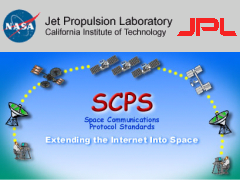 |
 |
 |
 |
SCPS-TP - Linux TCP stack enhancements

The Customer
The customer provides WAN utilization appliances including: Compression,
Acceleration, Layer 7 classification and Quality of Service.
The Product
The product is an appliance which improves network utilization.
In addition to bandwidth expansion capabilities, it provides a rich set of
features that improve application's response times and provide layer 7
visibility and control tools that enable network managers to align network
resources with business priorities.
This combination of features is achieved through next-generation WAN
compression, application-specific acceleration, Layer 7 QoS capabilities
and sophisticated monitoring and reporting.
The product is available for IP or serial traffic and can support acceleration
of encrypted traffic. It can support mesh networks and can be deployed
On-Path (between the LAN segment and router) or On-LAN by connecting to
a switch in the LAN segment.
One of the product's available plug-ins provides TCP acceleration, enabling
transfers in excess of bandwidth, latency and packet loss limitations.
Implemented according to NASA developed SCPS-TP protocol (www.scps.org).
About SCPS
SCPS (Space Communications Protocol Standards) is a set of networking
protocols designed and developed as a joint effort by the DoD and NASA, in
order to determine feasibility of standardizing end-to-end data communications
across civil and military space systems.
SCPS-TP is SCPS's underlying retransmission control protocol, optimized
to provide reliable end-to-end delivery of spacecraft command and telemetry
messages between computers that are communicating over a network containing one
or more potentially unreliable space data transmission paths. The SCPS-TP is
based on the well-known Internet Transmission Control Protocol (TCP).
The extensions to TCP specified by SCPS-TP are applicable in fields beyond
spacecraft command, and can solve similar problems in environments, such as
those of the mobile/wireless and tactical communications communities.
The Challenge
Ximpo Group's Networking and Kernel experts were hired to perform the
design, development and integration of the SCPS components for the product.
In order to best use SCPS and Linux's TCP stack features while reducing the
latency overhead to the minimum, Ximpo Group's experts engineered a
performance intensive solution based on the addition of SCPS features into
the Linux Kernel's TCP stack, while optimizing the kernel configuration and
adding other in-kernel acceleration mechanisms which improve the system
performance even more.
During the final phases of development, it was discovered that the
delivered solution, outperformed the original analysis.
The clear conclusion was that the configuration optimization along with the
in-kernel acceleration mechanisms have contributed to improving the system's
performance more than what was expected from the SCPS features alone.
The work concluded with the integration of the solution into the customer's
management system, knowledge transfer, and escorting until
market-deployment.
The product is already in the market, generating multi-million dollar
sales, and highly acclaimed for some of its unique features.
<<back
|
 |
 |
 |
 |
|
|

